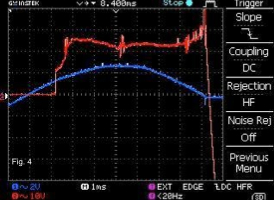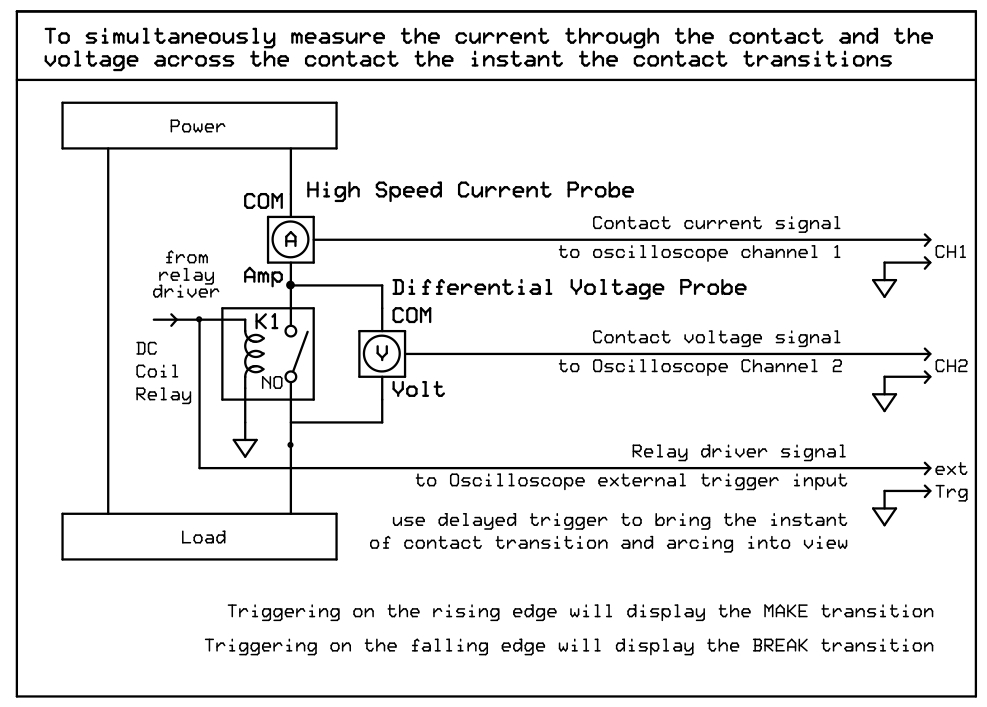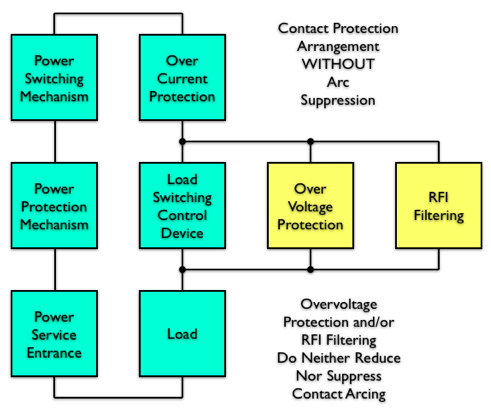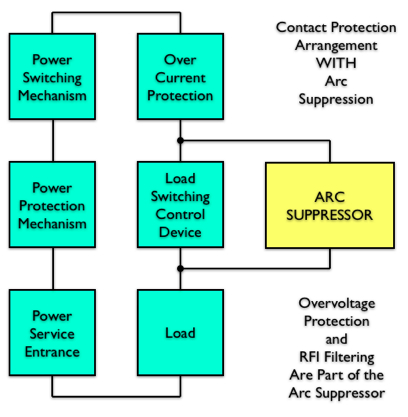Arc Suppression Factor
Arc suppression methods and devices may be compared using a Contact Arc Suppression Factor (CASF), measuring the ratio of the arc energy without suppression (Warc) over the arc energy with suppression (Warclet) as follows:
CASF = Warc / Warclet
The CASF allows arc suppression devices to be objectively compared as follows:
CASF = 1 ……… No Effect
CASF > 1 ……… Positive Effect (i.e., arc energy is decreased)
Example AC Power CASF Calculation

The break arc lasts about 7ms as shown, until the current approaches the zero-crossing. Looking at this scope picture you can almost “feel” the arc burn through the widening contact air gap.
Warc0(unsuppressed arc energy) ≈ 437mJ
Calculation: Warc0 = Iarc0 x Varc0 x Tarc0
Mean Iarc0 ≈ 2.5A
Mean Varc0 ≈ 25V
Mean Tarc0 ≈ 7ms

The break arc is arrested as it forms, and is suppressed approximately 7ms until the current approaches the zero- crossing. We refer to this initially arrested arc as an “arclet.”
Warclet(arclet energy**) ≈ 350µJ
Calculation: Wa/s = Ia/s x Va/s x Ta/s
Mean Ia/s ≈ 7A
Mean Va/s ≈ 10V
Mean Ta/s ≈ 5µs
** Energy in the initial, nascent arc just prior to suppression
The CASF calculation for an arc suppressed by NOsparc technology is:
CASF ≈ 1250 … A Very Significant Effect
Where:
CASF = Warc0 ÷ Warclet
Mean Warc0 ≈ 437mJ; Mean Warclet ≈ 350μJ
Test Set-up:





The Four Relay Contact States:
1. CLOSED
2. BREAK (transition state from closed to open)
3. OPEN
4. MAKE (transition state with “bounce” from open to closed state)
The relay contacts move from open to closed and back in four distinct states shown in the figure above-right.ing.
